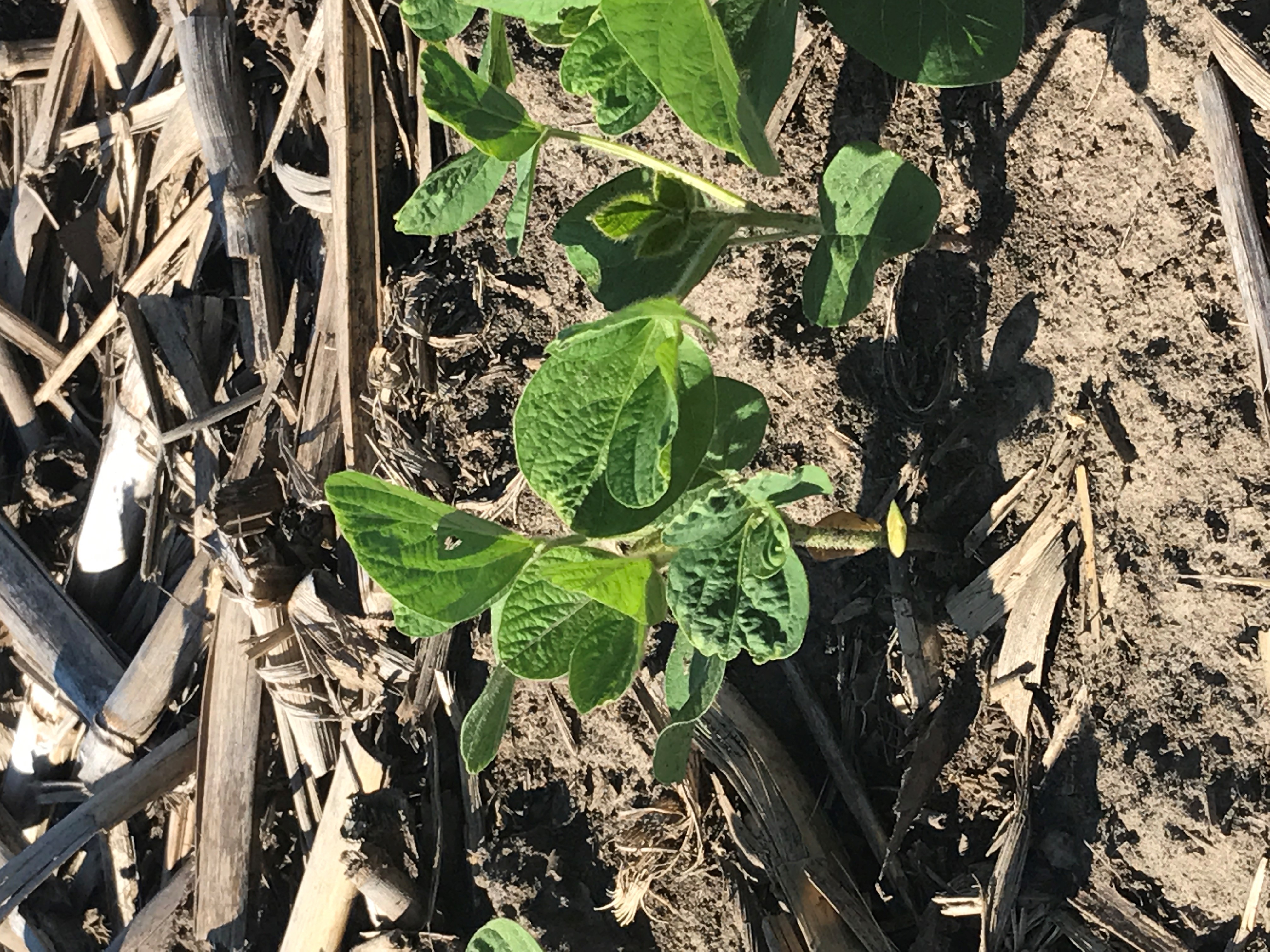ILSOYADVISOR POST
How to Recognize Chemical Damage on Soybeans
After this last round of post applied soybean herbicide, I’ve received multiple calls about herbicide damage. There are a multitude of reasons that cause herbicide damage; that is what we are going to dive into today.
The best way to start looking at a herbicide concern is to start with the beginning of the season and field history, then work your way towards the plant symptoms you are seeing in the field today. Planting date, trait of soybean planted in the field, herbicide applications from the previous year as well as this year’s herbicide applications, and last year’s and this year’s environmental history give you a good place to start. After you have those items established in your mind, it’s easier to continue down the path toward what is causing the issue.
There are many instances of faulty application, herbicide particle and vapor drift, and carryover herbicide damage. This year with our less than favorable environment I am going to concentrate on two types of herbicide damage I get the most questions about from growers.
The inclusion of residual herbicides into the post pass of a weed control plan is certainly welcome, especially with our concern about late-planted soybeans reaching canopy closure. However, for growers who are new to adding in a Group 15 herbicide (long-chain fatty acid inhibitors) or aren’t used to running the maximum rate, there have been instances that the damage has been surprising to say the least.
Group 15 herbicides, such as Dual®, Outlook®, Warrant® and Zidua®, can have damage that looks rather unique when you are in the field examining the leaves, but can be deceiving when “windshield” scouting. The tell-tale signs of Group 15 damage are crinkled, heart-shaped leaves. Cold, wet weather after application can magnify this type of damage, so we do not usually see them in a hot, dry July or August environment, though an increased rate of product which was common can do the same thing. The damage will show up on areas of the plant that were sprayed; new growth will appear unaffected as pictured in the photo below.

Group 14 Herbicides (PPO Inhibitors) like Flexstar®, Blazer® and Cobra® can also create some concerns. The spotting often referred to as “burning” can be misdiagnosed as fungal or bacterial issues. It is important to keep in mind that herbicide spotting can occur in both a hot, dry environment as well as a cool, damp environment for a similar reason—the soybean plant is under stress and is not actively growing. In those instances, the product sits on the leaves and is not metabolized by the plant. In a hot and dry environment after herbicide is applied—sometimes within hours of application—injury symptoms may occur. If you are on the fence about whether a plant has herbicide damage or disease send it in to a local lab.






Comments
Add new comment